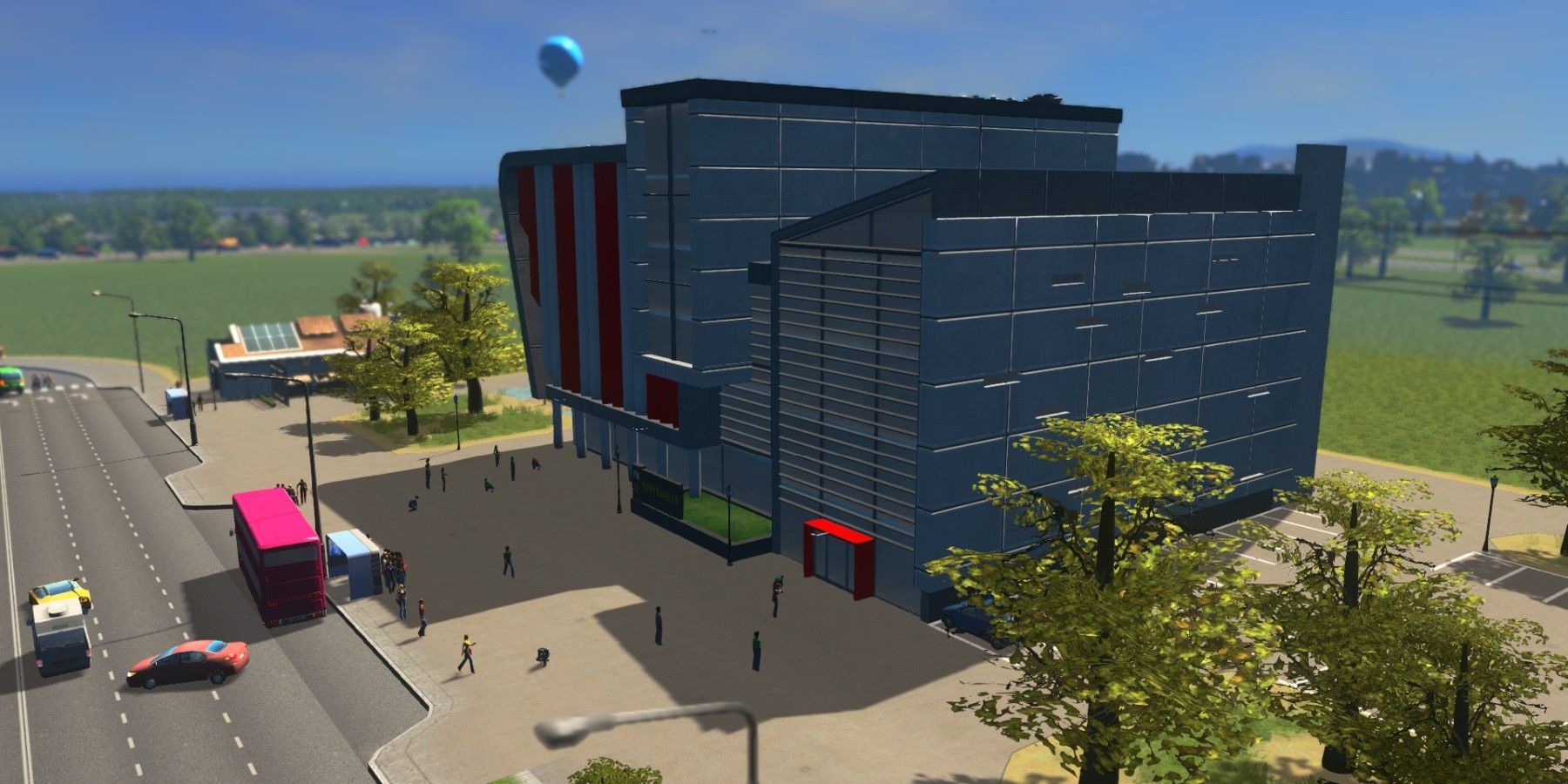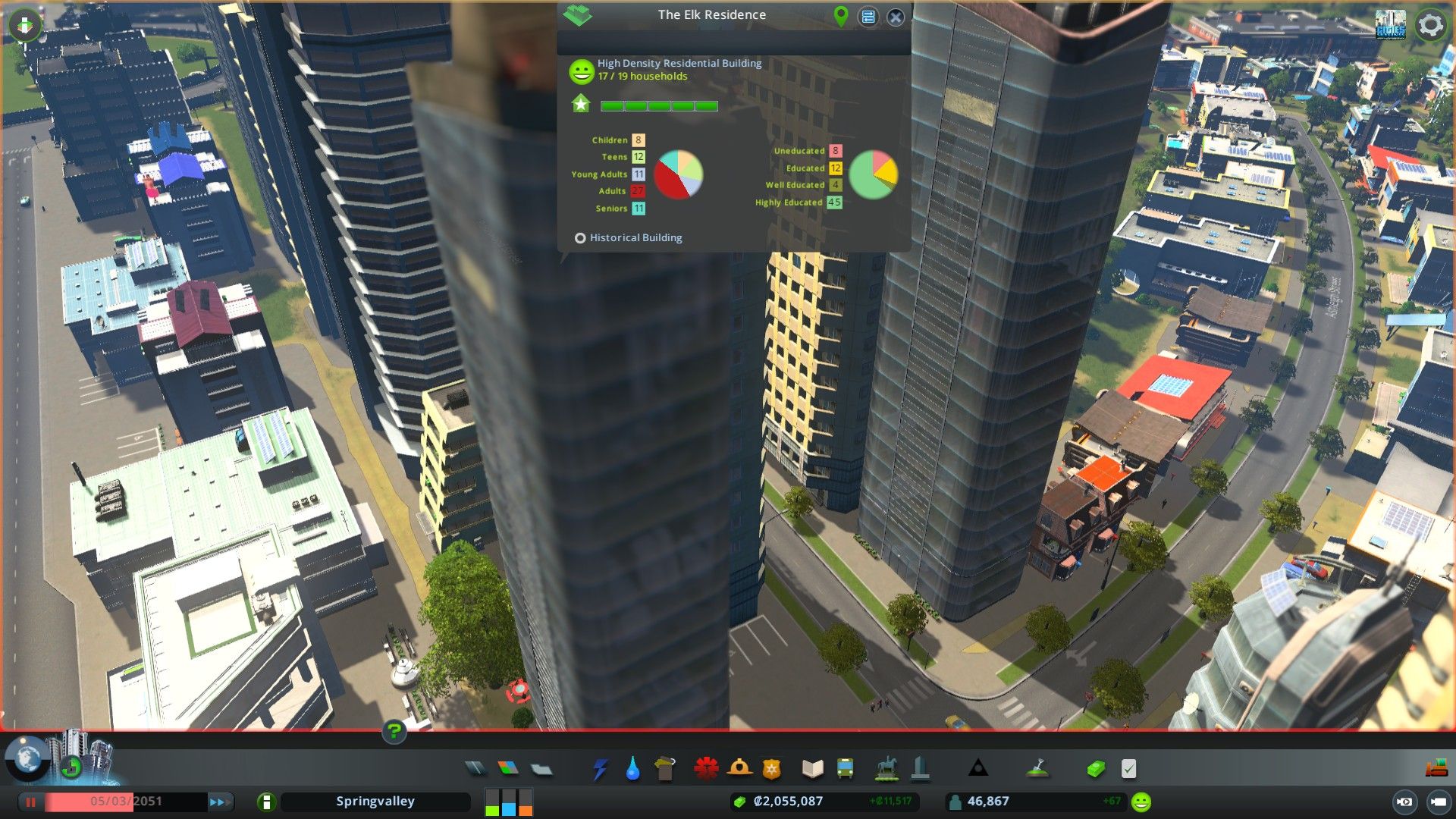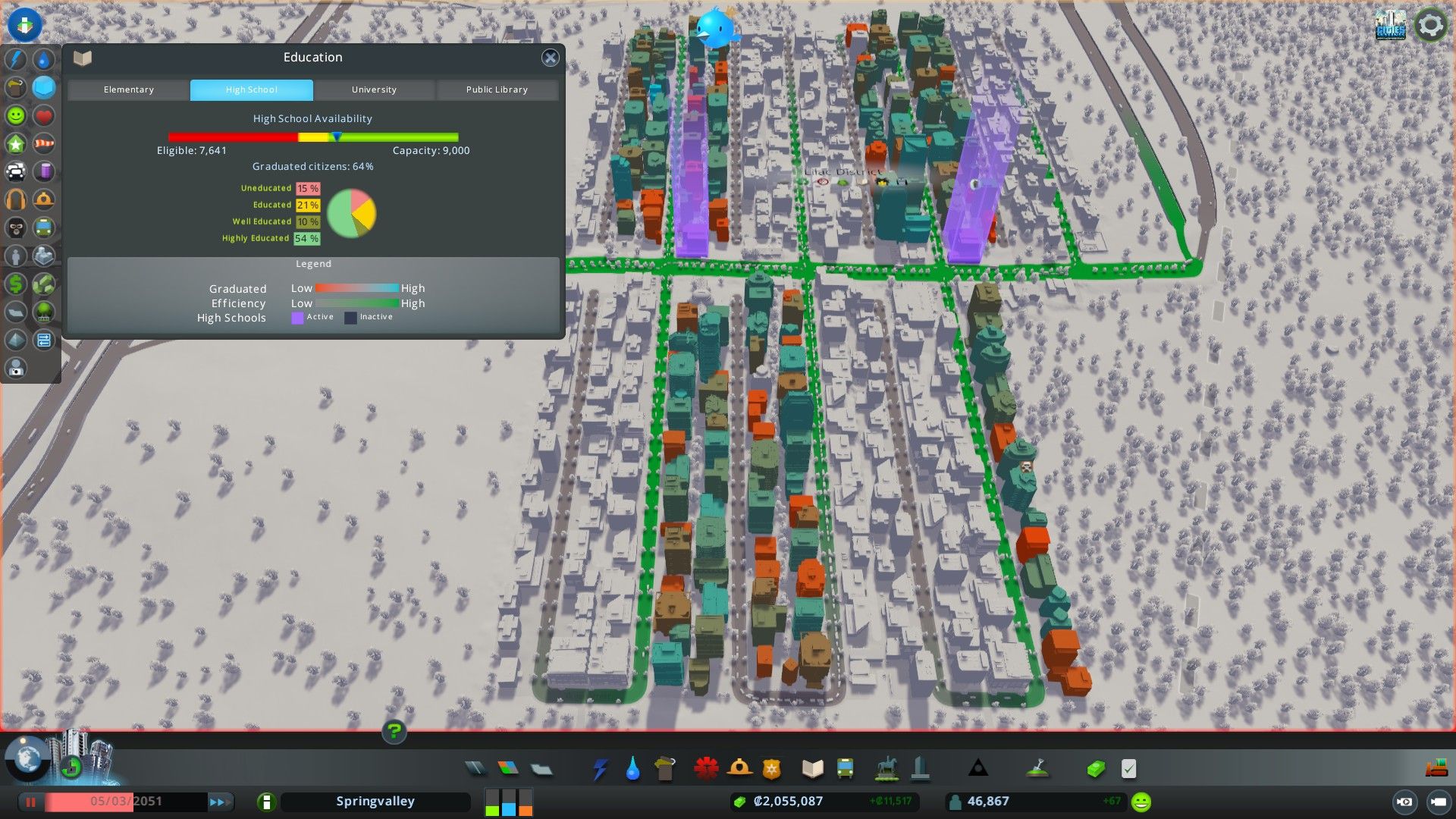Education is one of the most useful services in Cities: Skylines. While services like electricity, water, and garbage will keep buildings from being abandoned, education is the biggest deciding factor in determining when buildings get to level up. The more residents or workers are educated, and the better their education is, the higher the building's level will go.
What makes this so good is the fact that high-level buildings have higher property values, and this means they pay more in taxes. As such, education buildings are a direct investment in the city's wealth, and any player who wants to boost their income should make sure they have plenty of education opportunities.
The Education Levels
When players select the education building menu at the bottom of the Cities: Skylines interface or check the education info view (both look like an open book), they can see the education levels of every citizen in the city. Players can also check the education levels of people in individual residences and of the workers at a workplace by selecting individual buildings.
- "Uneducated" means that a person has had no formal education and is only qualified for the lowest positions. While in real life educated people move to new cities all the time, in Cities: Skylines new residences will always attract uneducated citizens.
- Educated citizens have graduated from elementary school. Players get access to elementary schools at the Little Hamlet milestone.
- Well-educated citizens have graduated from high school. High schools become available at the Tiny Town milestone.
- Highly educated citizens have graduated from a university. The university building is part of the Big Town milestone.
As players might expect, only children can go to elementary school, only teens can go to high school, and only adults can go to a university. This means that the education level in new residential zones will climb slowly as children are born and graduate from each institution. And while the city-wide education level will increase as long as the availability of each institution is in the green, there will always be a few uneducated citizens so long as the player keeps expanding the city.
Education Tips
- While education is very important, many zoned buildings need more than just education to reach the highest levels. This is especially true for office buildings and commercial buildings.
- In the education view, building colors are based on the percentage of graduates living in the location. To see whether education buildings are conveniently located, check how green the roads are. Note that citizens will travel inconvenient distances to get an education.
- The last education building in the base game is a public library. The library is mostly useful as an entertainment building, but visitors sometimes upgrade their education level after a visit. However, this is very rare.
- Jobs with no education requirement can take workers with any education level, but jobs with a high requirement need workers with the right qualifications. Players should keep this in mind when developing new areas, or when activating the "Industry 4.0" policy.
- The "Education Boost" policy makes young adults who are well-educated seek go to a university before getting a job. This helps improve the percentage of highly educated citizens, but it also raises the education budget by 25 percent.
Cities: Skylines is available now on PC, PS4, Switch, and Xbox One, and it's coming for PS5 and Xbox Series X/S on February 15.



